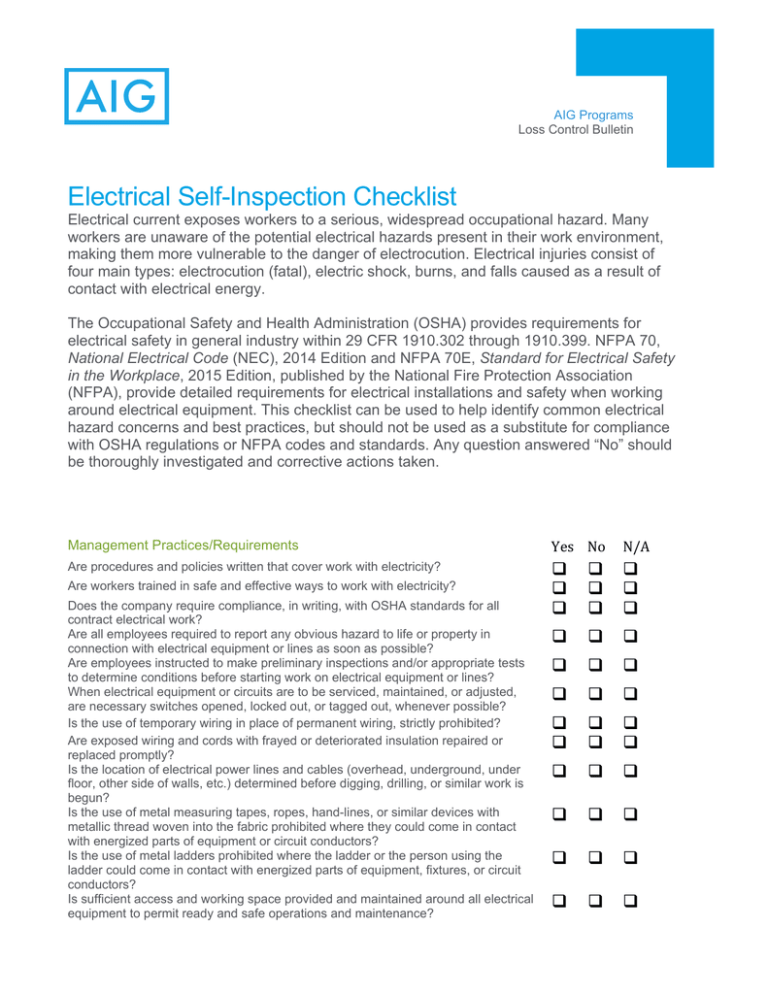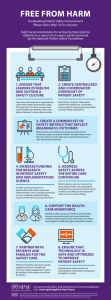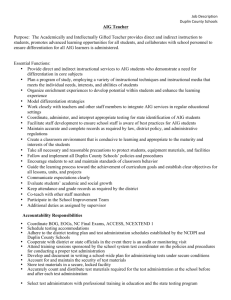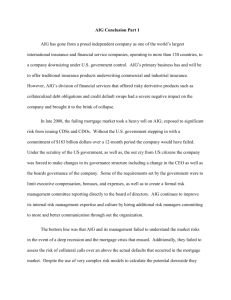
AIG Programs
Loss Control Bulletin
Electrical Self-Inspection Checklist
Electrical current exposes workers to a serious, widespread occupational hazard. Many
workers are unaware of the potential electrical hazards present in their work environment,
making them more vulnerable to the danger of electrocution. Electrical injuries consist of
four main types: electrocution (fatal), electric shock, burns, and falls caused as a result of
contact with electrical energy.
The Occupational Safety and Health Administration (OSHA) provides requirements for
electrical safety in general industry within 29 CFR 1910.302 through 1910.399. NFPA 70,
National Electrical Code (NEC), 2014 Edition and NFPA 70E, Standard for Electrical Safety
in the Workplace, 2015 Edition, published by the National Fire Protection Association
(NFPA), provide detailed requirements for electrical installations and safety when working
around electrical equipment. This checklist can be used to help identify common electrical
hazard concerns and best practices, but should not be used as a substitute for compliance
with OSHA regulations or NFPA codes and standards. Any question answered “No” should
be thoroughly investigated and corrective actions taken.
Management Practices/Requirements
Yes No N/A Are procedures and policies written that cover work with electricity?
Are workers trained in safe and effective ways to work with electricity?
Does the company require compliance, in writing, with OSHA standards for all
contract electrical work?
Are all employees required to report any obvious hazard to life or property in
connection with electrical equipment or lines as soon as possible?
Are employees instructed to make preliminary inspections and/or appropriate tests
to determine conditions before starting work on electrical equipment or lines?
When electrical equipment or circuits are to be serviced, maintained, or adjusted,
are necessary switches opened, locked out, or tagged out, whenever possible?
Is the use of temporary wiring in place of permanent wiring, strictly prohibited?
Are exposed wiring and cords with frayed or deteriorated insulation repaired or
replaced promptly?
Is the location of electrical power lines and cables (overhead, underground, under
floor, other side of walls, etc.) determined before digging, drilling, or similar work is
begun?
Is the use of metal measuring tapes, ropes, hand-lines, or similar devices with
metallic thread woven into the fabric prohibited where they could come in contact
with energized parts of equipment or circuit conductors?
Is the use of metal ladders prohibited where the ladder or the person using the
ladder could come in contact with energized parts of equipment, fixtures, or circuit
conductors?
Is sufficient access and working space provided and maintained around all electrical
equipment to permit ready and safe operations and maintenance?
Equipment Requirements
Yes No N/A Are portable electrical tools and equipment grounded or of the double-insulated
type?
Are electrical appliances, such as vacuum cleaners, polishers, vending
machines, etc., grounded?
Do extension cords have a grounding conductor?
Are multiple plug adaptors prohibited?
Are ground-fault circuit interrupters (GFCIs) installed on temporary circuits at
locations where construction, demolition, modifications, alterations, or
excavations are being performed?
Do the electrical installations in hazardous dust or vapor areas meet the National
Electric Code (NEC) for hazardous locations?
Are all temporary circuits protected by suitable disconnecting switches or plug
connectors at the junction with permanent wiring?
Are flexible cords and cables free of splices or taps?
Are clamps or other securing means provided on flexible cords or cables at
plugs, receptacles, tools, equipment, etc., and is the cord jacket securely held in
place?
Are all cord, cable, and raceway connections intact and secure?
In wet or damp locations, are electrical tools and equipment appropriate for the
use or location or otherwise protected, such as though GFCI outlets or
breakers?
Are all disconnecting switches and circuit breakers labeled to indicate their use
or equipment served?
Are disconnecting means always opened before fuses are replaced?
Do all interior wiring systems include provisions for grounding metal parts of
electrical raceways, equipment, and enclosures?
Are all electrical raceways and enclosures securely fastened in place?
Are all energized parts of electrical circuits and equipment guarded against
accidental contact by approved cabinets or enclosures?
Are all unused openings (including conduit knockouts) in electrical enclosures
and fittings closed with appropriate covers, plugs, or plates?
Are electrical enclosures, such as switches, receptacles, junction boxes, etc.,
provided with tight-fitting covers or plates?
Are disconnecting switches for electrical motors in excess of two horsepower
able to open the circuit when the motor is stalled?
Is each motor disconnecting switch or circuit breaker located within sight of the
motor control device?
Contact
AIG Programs Loss Control
T 800 611 3994
F 888 659 9047
programslc@aig.com
COPYRIGHT ©2014, ISO Services, Inc.
CH-50-64 10/6/14
The information contained in this publication was obtained from sources believed to be reliable. ISO Services, Inc., its companies and employees make no guarantee of results and assume
no liability in connection with either the information herein contained or the safety suggestions herein made. Moreover, it cannot be assumed that every acceptable safety procedure is
contained herein or that abnormal or unusual circumstances may not warrant or require further or additional procedure.
American International Group, Inc. (AIG) is a leading international insurance organization serving customers in more than 130 countries. AIG companies serve commercial,
institutional, and individual customers through one of the most extensive worldwide property- casualty networks of any insurer. In addition, AIG companies are leading
providers of life insurance and retirement services in the United States. AIG common stock is listed on the New York Stock Exchange and the Tokyo Stock Exchange.
Additional information about AIG can be found at www.aig.com | YouTube: www.youtube.com/aig | Twitter: @AIG_LatestNews | LinkedIn: www.linkedin.com/company/aig
AIG is the marketing name for the worldwide property-casualty, life and retirement, and general insurance operations of American International Group, Inc. For additional
information, please visit our website at www.aig.com. All products and services are written or provided by subsidiaries or affiliates of American International Group, Inc.
Products or services may not be available in all countries, and coverage is subject to actual policy language. Non-insurance products and services may be provided by
independent third parties. Certain property-casualty coverages may be provided by a surplus lines insurer. Surplus lines insurers do not generally participate in state guaranty
funds, and insureds are therefore not protected by such funds.
© 2014 American International Group, Inc. All rights reserved.





